Circular Open Source Fashion¶
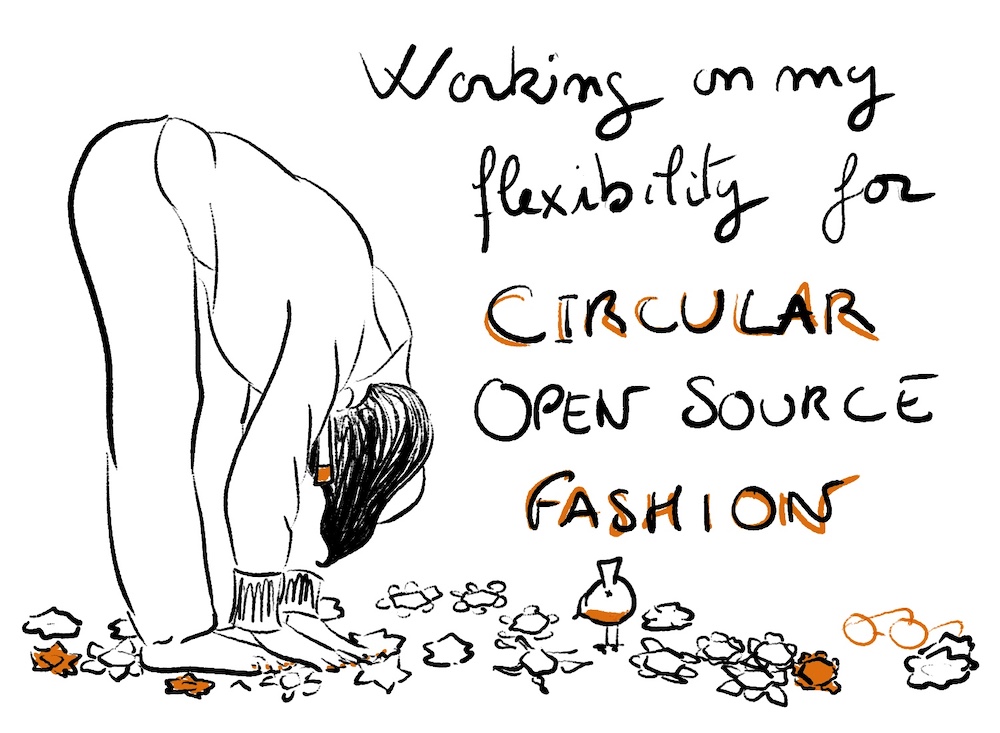 This week class outlines the systems behind fashion and the textile industry, focusing on alternative systems such as circular fashion, agile fashion, open value chains.
The goal was on creating modular elements, structures and connections that allow the user to change the shape of a garment, resize it or replace certain elements. Students will publish their creations on open source platforms and learn how to monitor and promote their creations in a distributed network.
The assignements are:
This week class outlines the systems behind fashion and the textile industry, focusing on alternative systems such as circular fashion, agile fashion, open value chains.
The goal was on creating modular elements, structures and connections that allow the user to change the shape of a garment, resize it or replace certain elements. Students will publish their creations on open source platforms and learn how to monitor and promote their creations in a distributed network.
The assignements are:
- Include some inspiration: research on artists or projects that work with modules and zero waste systems
- Document, Design and prototype with paper and scissors modular configurations and interlocking connections
- Document, Design and prototype digitally your modular configurations and interlocking connections in 2D
- Document the process of testing and laser cutting your designs, including the machine settings, material type and thickness
- Laser cut the modules. Create a modular or seamless garment, showing that the connection is well-designed and holds the pull/stretch. Document the assembly process and tests
- Upload the fabrication file at . The file should be in pdf format, in correct scale accompanied by 1-5 pictures(preferably in white background)
- Submit some of the modules to the analog or digital material library of the lab. (Recommended size 20cm x 20cm) (extra credit)
Inspirations¶
I love rugs and carpets. The idea of modules that allow to match them according to the surface and to be imaginative about the shape tempted me this week. On the web, there are many proposals for modular felt surfaces, mainly for walls. I retained three main axes that I wanted to explore:
Perfect interlocking To get more information about these works, check:
- Carpets and more modules objects by Aurelie Tu at Design/Milk
- Acoustic wall tile in wool felt by Mia Cullin
- Cuma and Cross by Takehiro Ando at dezeen
Hexagonal modules To get more information about these works, check:
- Waves from Architonic
- Hanging Divider by Caroline Williamson at Design/Milk
Creative volumes To get more information about these works, check:
- Flower Explosion by Nasia Burnet at Design/Milk
- Clouds from Ronan y Erwan Bouroullec
Process and workflow¶
Ideation¶
I use my very first tools: pencil and paper. I start with an hexagon because their assembly guarantees:
- to have a good hold without deformation as seen in the Architonic and Caroline Williamson hangings;
- to be able to add modules creating relief like the Flower Explosion by Nasia Burnet.
Here are my hand drawn sketches:
 I wanted to get some elements usually visible in a "verdures" tapestry. I chose to make some flowers and roots in many leaves.
I wanted to get some elements usually visible in a "verdures" tapestry. I chose to make some flowers and roots in many leaves.
Prototype¶
In order to prototype, I worked with a base my dear Inkscape, then play with printed and cut basic modules to get their evolution
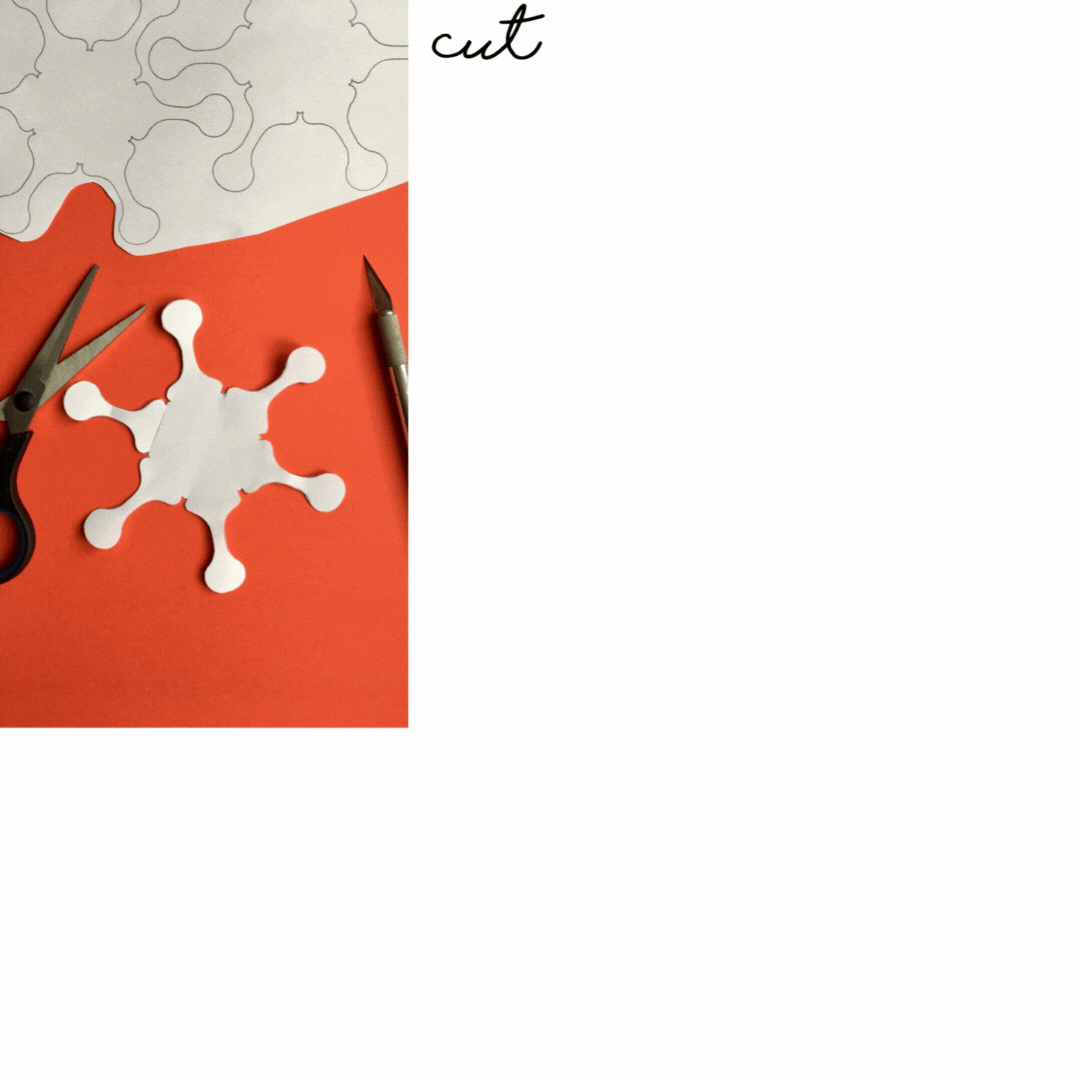
Digital design¶
The final modules 1 were obtained by modifying my inskape file to get 3 differents modules with slots to fit together.
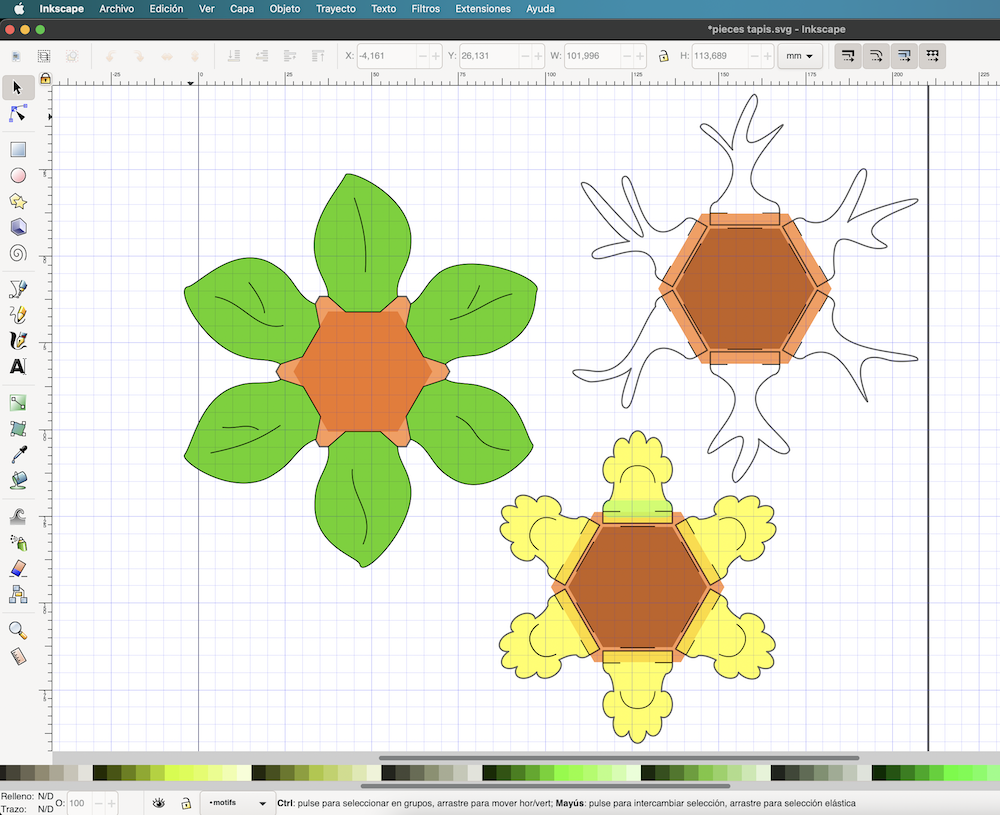
Laser cutting¶
As last week, the plan is to get it cut by the Trotec laser cut. I choose 3 fabrics from Le Textile Lab: dark green wool felt, yellow suede and coated cork. Their cutting characteristics were already set in the Trotec. I tried different tools to net them and finally done it by myself 2
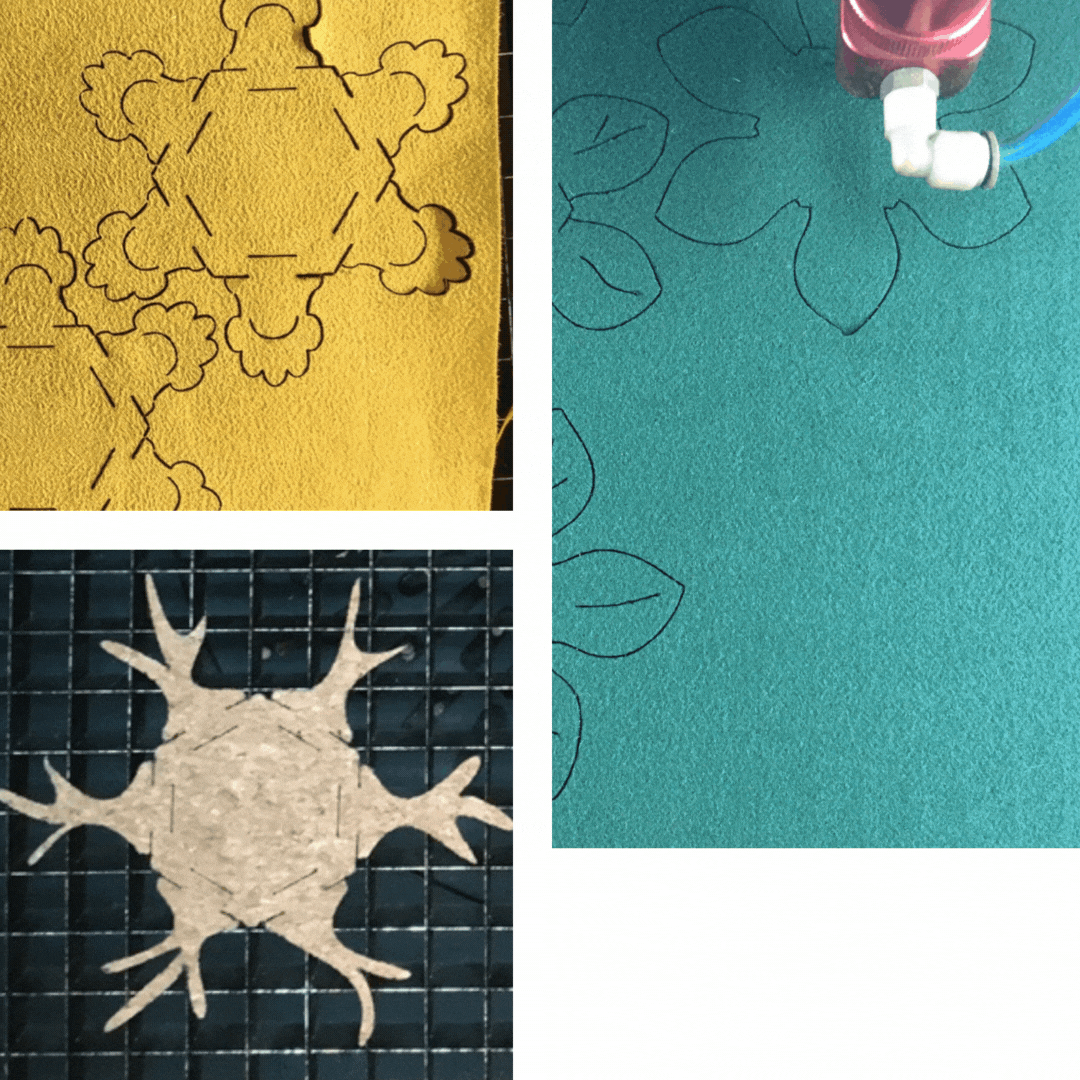 I think the laser is finally a bit too strong for the wool felt.
I think the laser is finally a bit too strong for the wool felt.
Assembly¶
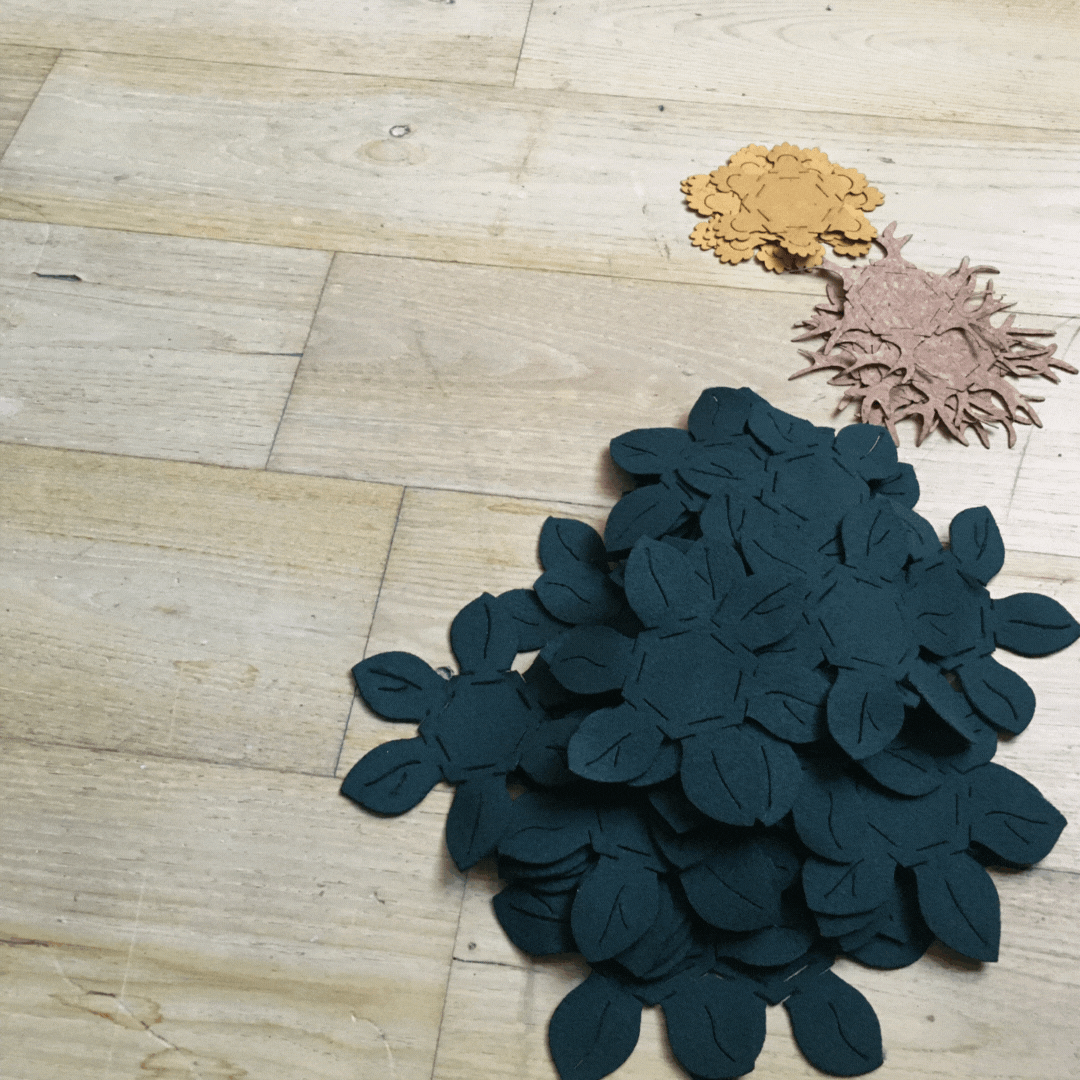
Testing¶
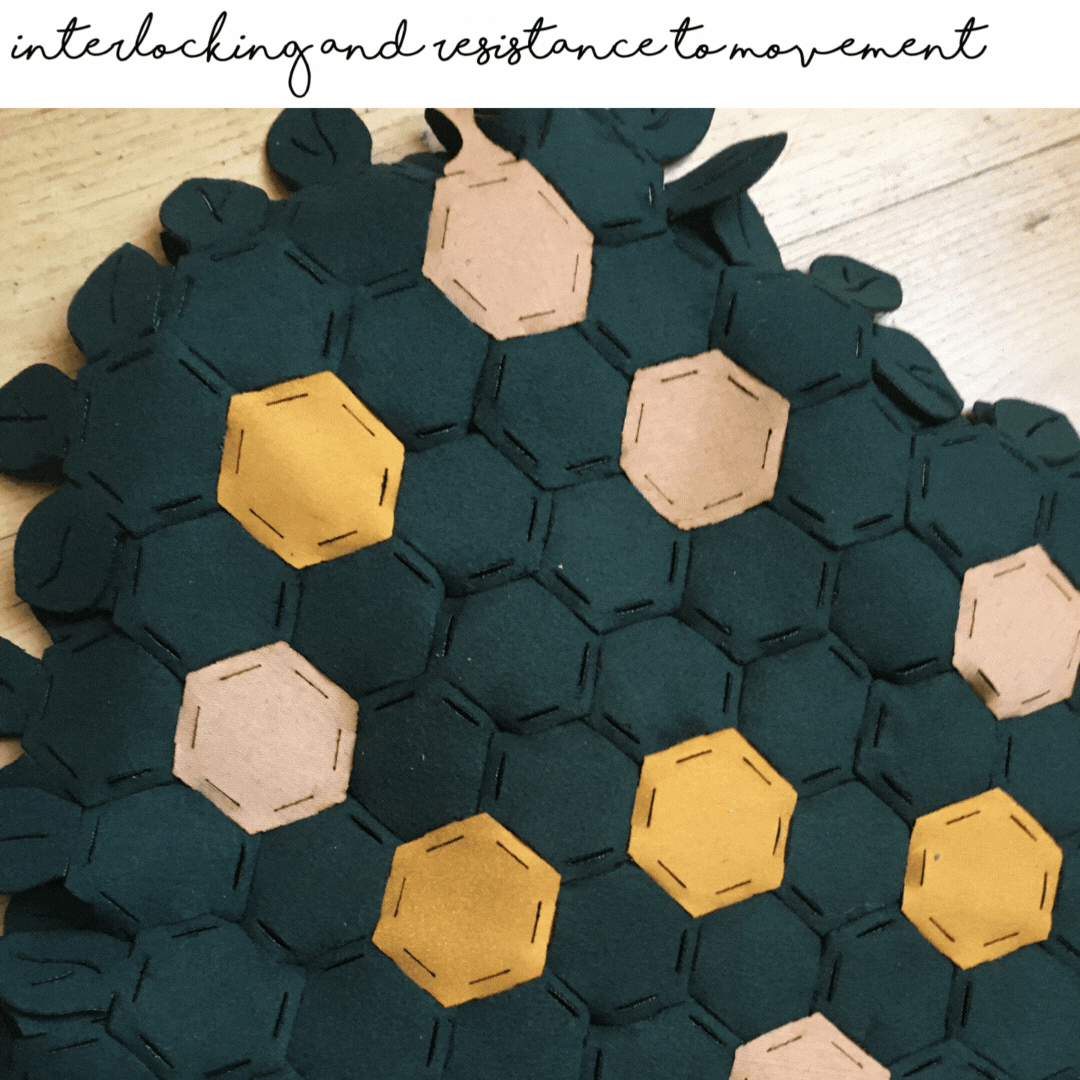
Final¶
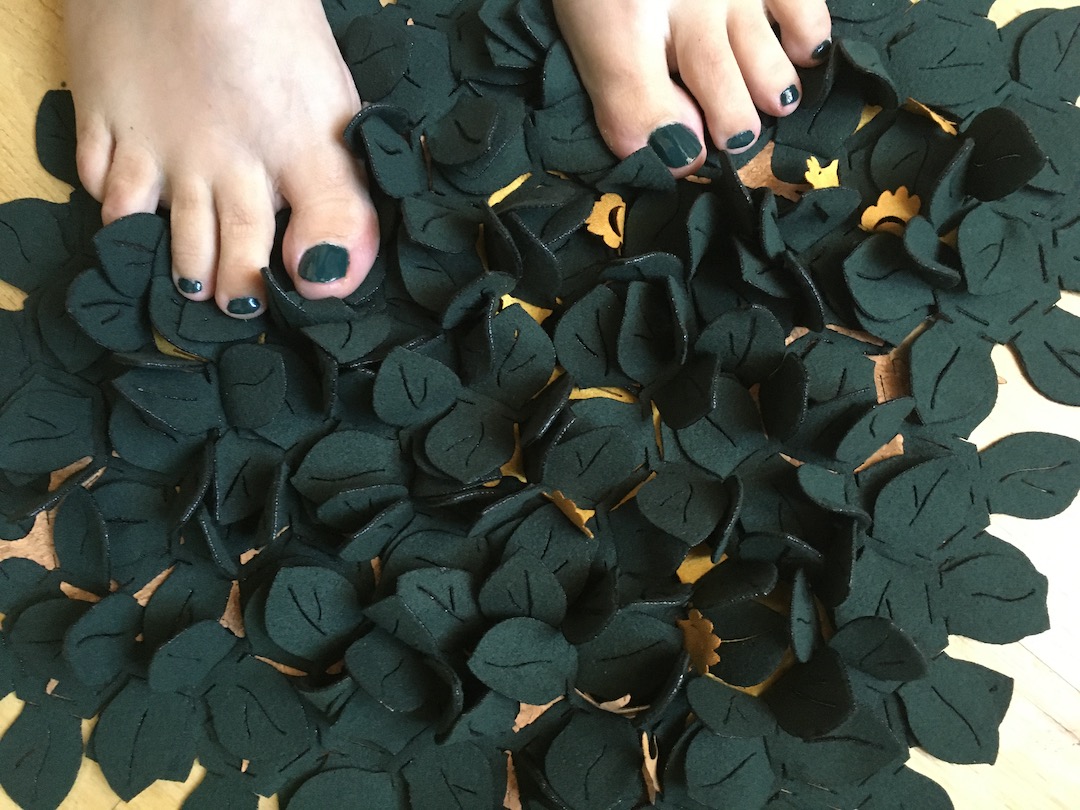 It would have been nice to make it a bit bigger, fortunately I wear a size 38 and not a 45!
It would have been nice to make it a bit bigger, fortunately I wear a size 38 and not a 45!
The Project is shared through oscircularfashion website. An Open Source Circular fashion catalogue by Fabricademy where anyone can browse, share and download circular designs.
Next step?¶
I'm considering making a modular rug as a final project. If so, here are some ideas that would be possibilities:
- adding small extra modules to the core of the flower and roots either in wool or in flexible 3D printing;
- dyeing wool felt to have light greens and yellows;
- make some more abstracts modules;
- find a better way to nest;
- try to make a ligther laser cut to get softer edges;
- ...